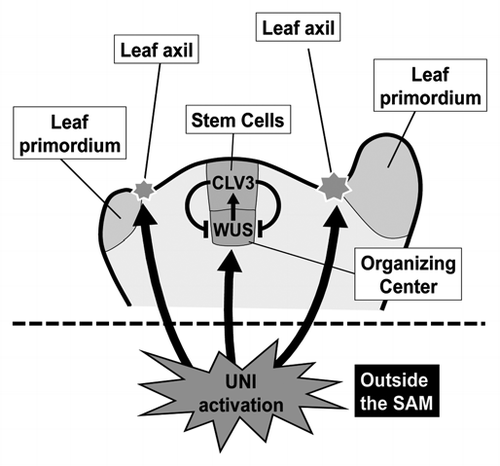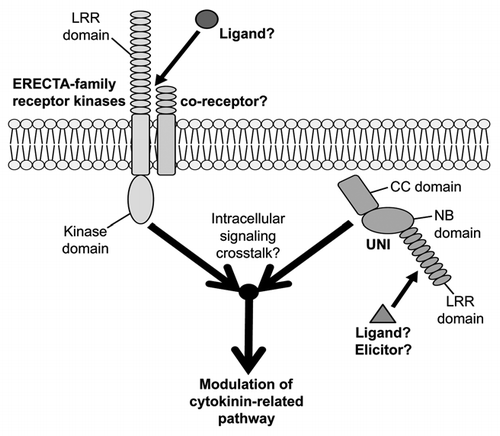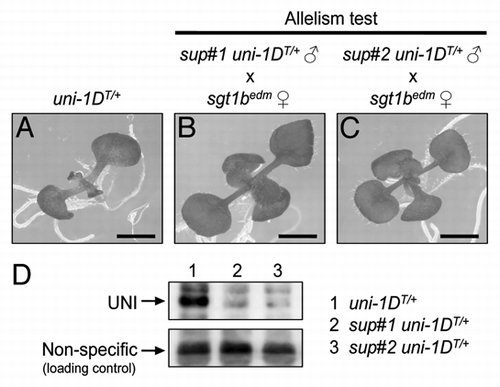Figures & data
Figure 1 UNI activation non-cell-autonomously affects activities of both the SAM and axillary meristem. UNI promoter is active only outside the meristems. Activities of the SAMs, which are located at the top of stems, are largely attenuated in uni-1D/+ plants and extra axillary meristems are formed at leaf axils of uni-1D/+ plants. See the text for further explanation.

Figure 2 Intracellular signaling crosstalk between UNI-triggered and ER-family-dependent signaling pathways modulates cytokinin-related pathway. UNI harbors a CC (coiled-coil) domain, an NB (nucleotide-binding-site) domain and an LRR (leucine-rich repeat) domain. A ligand or an elicitor for activation of UNI proteins have not yet been identified. The ERECTA (ER) family members encode LRR (leucine-rich-repeat) receptor-like kinases in a subfamily of transmembrane-type receptors. Information about co-receptors that might form receptor complexes with ER-family members in UNI-related signaling and also about ligands for such receptor complexes is still lacking. Activities of ER-family members in UNI-expressing cells are required for uni-1D/+ phenotypes and also for modulation of cytokinin-related pathway.

Figure 3 sup#1 and sup#2 mutants are allelic to sgt1b loss-of-function mutant and UNI proteins are unable to stably exist in both mutants. (A) 10-d-old seedling of the hemizygous transgenic plant harboring a uni-1D genomic fragment (hereafter, uni-1DT/+)Citation1,Citation15 shows growth defects such as slower leaf formation and narrow leaf shape. Allelism test was performed by crossing edm1,Citation22 an sgt1b loss-of-function mutant, with (B) sup#1 uni-1DT/+ or (C) sup#2 uni-1DT/+ plants. The resulting F1 seeds were sown on kanamycin-containing plates to ensure the presence of uni-1DT transgene that contains a kanamycin-resistant gene. edm seeds were kindly gifted from Dr. Ken Shirasu (RIKEN). Bars = 1 mm. (D) Protein extracts from 10-d-old seedlings were separated by SDS-PAGE and then immunoblot using anti-UNI antibody was performed. Lane 1: uni-1DT/+. Lane 2: sup#1 uni-1DT/+. Lane 3: sup#2 uni-1DT/+. Plants were grown on kanamycin-containing plates to ensure the presence of uni-1DT transgene. Upper part shows UNI proteins and lower part shows non-specific bands detected on the same membrane as loading controls.
